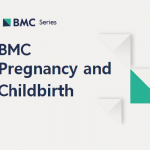 The American University of Armenia (AUA) Turpanjian School of Public Health (SPH) alumni Meri Tadevosyan (MPH ‘11) and Anna Ghazaryan (MPH ‘11) published an article titled “Factors contributing to rapidly increasing rates of cesarean section in Armenia: a partially mixed concurrent quantitative-qualitative equal status study.” The study is based on their master’s thesis projects. The co-authors of the article are Dr. Arusyak Harutyunyan and Dr. Varduhi Petrosyan from SPH, Dr. Adam Atherly from the University of Vermont, and Dr. Kim Hekimian from Columbia University. The paper was published in the January issue of BMC Pregnancy and Childbirth, an open access, peer-reviewed journal.
The American University of Armenia (AUA) Turpanjian School of Public Health (SPH) alumni Meri Tadevosyan (MPH ‘11) and Anna Ghazaryan (MPH ‘11) published an article titled “Factors contributing to rapidly increasing rates of cesarean section in Armenia: a partially mixed concurrent quantitative-qualitative equal status study.” The study is based on their master’s thesis projects. The co-authors of the article are Dr. Arusyak Harutyunyan and Dr. Varduhi Petrosyan from SPH, Dr. Adam Atherly from the University of Vermont, and Dr. Kim Hekimian from Columbia University. The paper was published in the January issue of BMC Pregnancy and Childbirth, an open access, peer-reviewed journal.
Armenia has experienced an upward trend in cesarean section (CS) deliveries with a rate of 31% in 2017 compared to 7.2% in 2000. The World Health Organization suggests that when the CS rate is around 10%, it helps to reduce maternal and infant mortality rates; however, rates higher than 15% indicate unnecessary use of CS and the health risks might be bigger than the benefits to mothers and newborns. Overuse of CS is a global public health problem. The study by SPH researchers reveals that financial incentives, maternal request and lack of regulation could be contributing to the increase of CS rates in Armenia. The quantitative phase of the study has confirmed the findings from the qualitative phase of the potential link between the provider remuneration mechanism and increasing CS rates, particularly in secondary level maternity hospitals with lower numbers of birth.
The paper finds that the amount of bonus payments to OBGYNs, within the Obstetric Care State Certificate program of the Ministry of Health, was 11-fold higher (ranging from 7 to 43 between hospitals) for CS than for vaginal delivery, indicating that OBGYNs may have significant financial motivation to perform CS without medical necessity. While OBGYNs did not admit that higher reimbursement for CS could lead to increasing CS rates, policymakers have suggested a relationship between the high CS rate and the provider payment mechanism. The study has also revealed significant variations in practice among hospitals due to the lack of standard treatment guidelines.
The article concludes with several recommendations, in line with existing international evidence that could help the Armenian health system to improve financial and regulatory mechanisms for performing CS. The Obstetric Care State Certificate program of the Ministry of Health should reconsider the provider payment mechanism relative to bonus payments for CS and vaginal delivery. Armenia would need to be better aligned with international guidelines for practicing vaginal birth after having a CS; develop alternative financing and regulatory mechanisms for performing CS without medical reasons, simply based on maternal request by introducing demand-side disincentives (co-payment) to reduce the unnecessary use of CS. The treatment guidelines should clearly delineate the specific medical indications for CS.
The AUA Gerald and Patricia Turpanjian School of Public Health works actively to improve population health and health services in Armenia and the region through interdisciplinary education and development of public health professionals to be leaders in public health, health services research and evaluation, and health care delivery and management.
